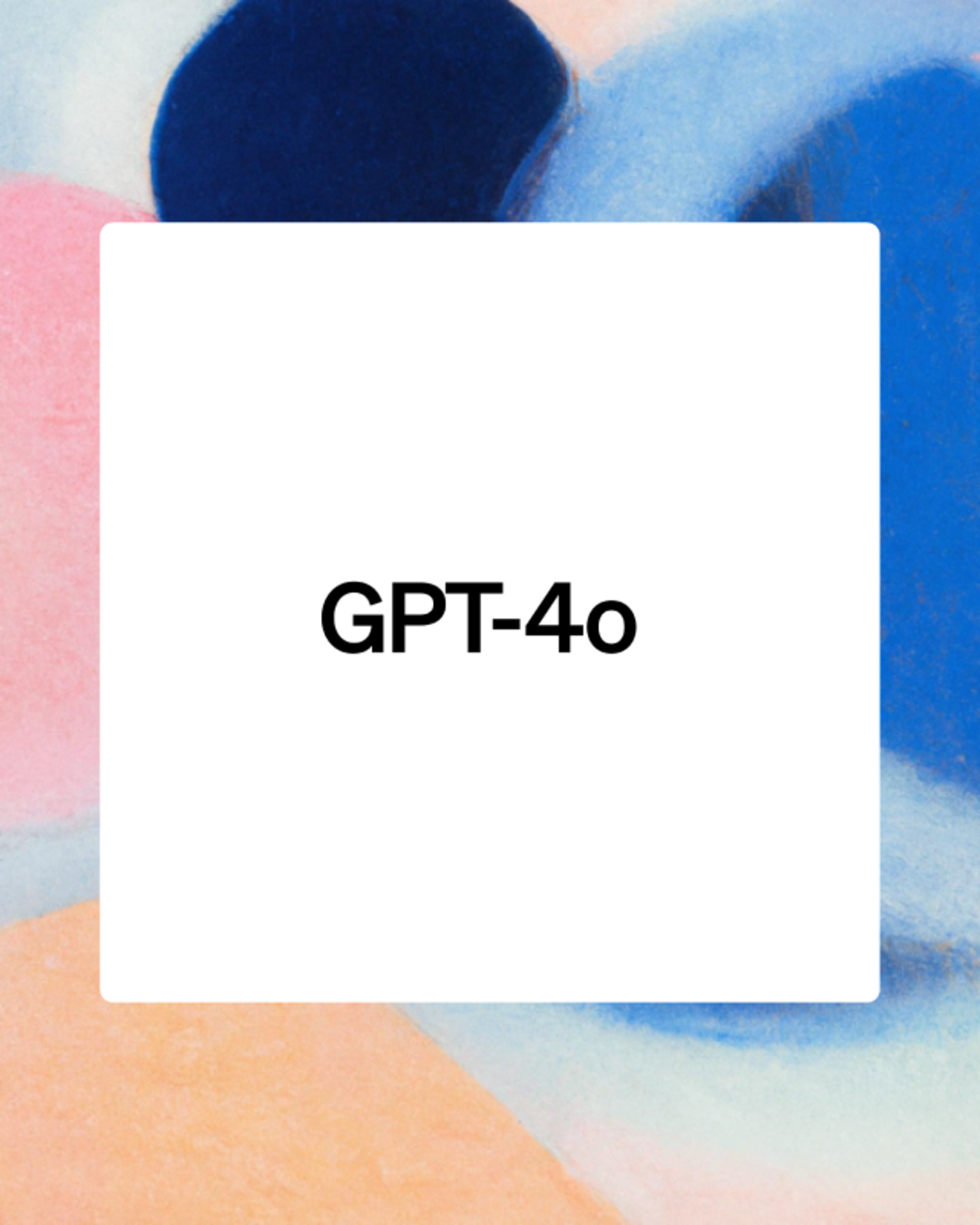GPT-4o (“o” for “omni”) is a step towards much more natural human-computer interaction—it accepts as input any combination of text, audio, and image and generates any combination of text, audio, and image outputs. It can respond to audio inputs in as little as 232 milliseconds, with an average of 320 milliseconds, which is similar to human response time(opens in a new window) in a conversation. It matches GPT-4 Turbo performance on text in English and code, with significant improvement on text in non-English languages, while also being much faster and 50% cheaper in the API. GPT-4o is especially better at vision and audio understanding compared to existing models.
Prior to GPT-4o, you could use Voice Mode to talk to ChatGPT with latencies of 2.8 seconds (GPT-3.5) and 5.4 seconds (GPT-4) on average. To achieve this, Voice Mode is a pipeline of three separate models: one simple model transcribes audio to text, GPT-3.5 or GPT-4 takes in text and outputs text, and a third simple model converts that text back to audio. This process means that the main source of intelligence, GPT-4, loses a lot of information—it can’t directly observe tone, multiple speakers, or background noises, and it can’t output laughter, singing, or express emotion.
GPT-4o’s text and image capabilities are starting to roll out today in ChatGPT. We are making GPT-4o available in the free tier, and to Plus users with up to 5x higher message limits. We’ll roll out a new version of Voice Mode with GPT-4o in alpha within ChatGPT Plus in the coming weeks.



I can’t wait till someone dose this, but open source and running on not billionaire hardware.
If you already didn’t know, you can run locally some small models with an entry level GPU.
For example i can run Llama 3 8B or Mistral 7B on a 1060 3GB with Ollama. It is about as bad as GPT-3 turbo, so overall mildly useful.
Although there is quite a bit of controversy of what is an “open source” model, most are only “open weight”
Emphasis on “small” models. The large ones need over a terabyte of RAM and it has to be high bandwidth (DDR is not fast enough).
And for most tasks, smaller models hallucinate way too often. Even the largest models are only just barely good enough.
Llama 2 70B can run on a specc-ed out current gen MacBook Pro. Not cheap hardware in any sense, but it isn’t a large data center cluster.
I been playing with the Mistral 7b models. About the most my hardware can reasonably run… so far. Would love to add vision and voice but I’m just happy it can run.
I’ve been wanting to run that one on my hardware but GPT4All just refuses to start its GUI. The only thing is a “chat.exe” that sits idle in the task manager. And this is an issue I’ve seen reported in their Github from several users, on both Win 10 and 11.
Have you find success with that frontend, or are you using one that actually works? I haven’t researched any others since this issue has me a little burnt out.
I use TextgenWebui and sometimes Kobold. I can only run it with 4bit quant enabled since I’m just short on VRam to fully load the model.
Text gen runs a server you access though the web browser instead of a desktop app.
I haven’t tried GPT4all.
I’ll definitely give the web UI a shot since I’m already quite familiar with A1111 and it seems they’re trying to recreate the same look and feel. Thank you for the info!
No problem. It’s fairly easy to figure out in a few minutes if you know Auto1111. Getting your model to actually load may need some tweaking, but I managed to just trial and error it.
https://github.com/oobabooga/text-generation-webui
Text-generation-webui, better known as Oobabooga.
I have this running at home on a used r630 (CPU only). oobabooga/automatic1111 for LLM/SD backends, vosk + mimic3 for tts/stt. A little bit of custom python to tie it all together. I certainly don’t have latency as low as theirs, but it’s definitely conversational when my sentences are short enough.
Check out the vladmandic fork of auto1111. It seems to be much quicker with new model support.
Been wanting to try voice cloning and totally not cobble together a DIY Ai wiafu.
I can’t tell if you are for real or joking with those concatenations of letters. Have you tried the new Oongaboonga123? I hear it’s got great support for bpm°C
I am not joking lol but I do sometimes forget most people don’t live in this space the same way I do. I think people use these names because the programs themselves are forked often and the software names are very unspecific otherwise. I meant to imply that I was using the main branches of these softwares.
https://github.com/oobabooga/text-generation-webui
https://github.com/AUTOMATIC1111/stable-diffusion-webui
Look up oobabooga, and then play with all the fun extensions.
I never had any luck with most of the extensions let alone figuring out how to format a prompt for the API. I’m just making shit up as I go.